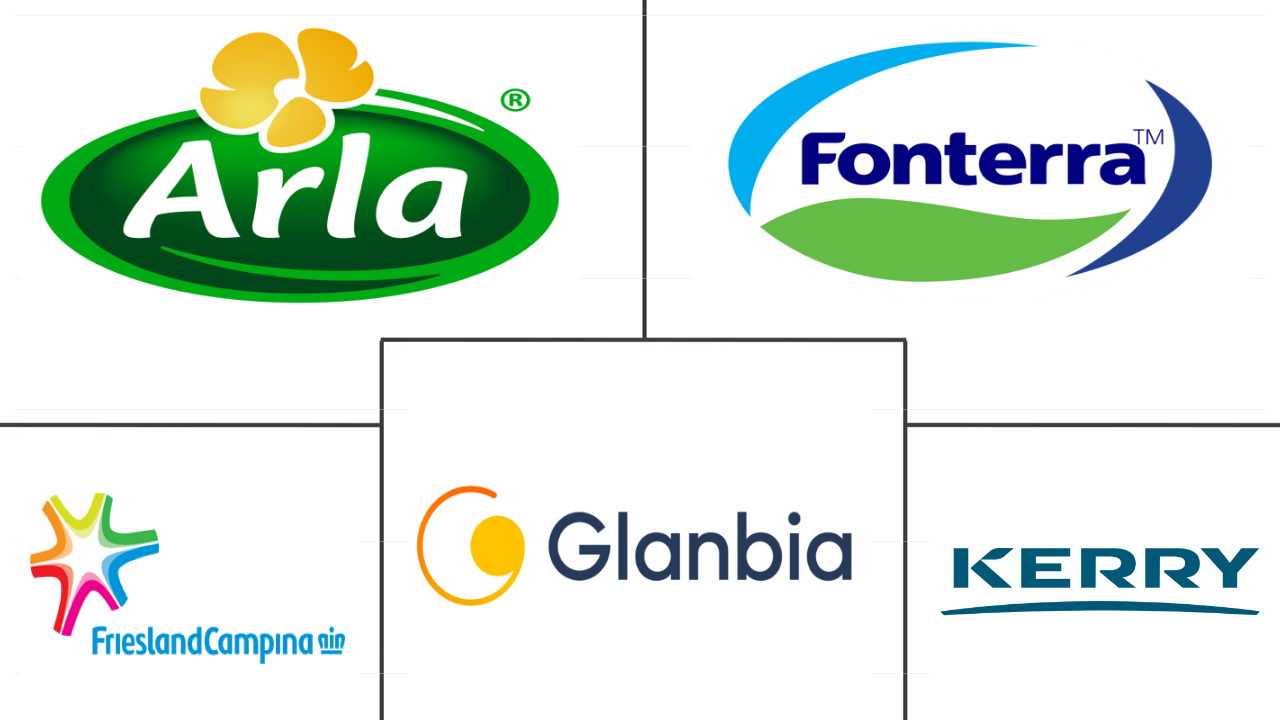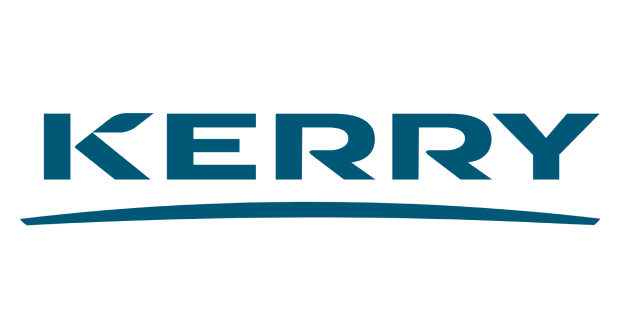Market Size of united states milk protein Industry
| Icons | Lable | Value |
|---|---|---|
|
|
Study Period | 2017 - 2029 |
|
|
Market Size (2024) | USD 173.4 Million |
|
|
Market Size (2029) | USD 219.8 Million |
|
|
Largest Share by End User | Supplements |
|
|
CAGR (2024 - 2029) | 4.86 % |
|
|
Fastest Growing by End User | Supplements |
|
|
Market Concentration | Medium |
Major Players |
||

|
||
|
*Disclaimer: Major Players sorted in no particular order |
United States Milk Protein Market Analysis
The United States Milk Protein Market size is estimated at 173.4 million USD in 2024, and is expected to reach 219.8 million USD by 2029, growing at a CAGR of 4.86% during the forecast period (2024-2029).
173.4 Million
Market Size in 2024 (USD)
219.8 Million
Market Size in 2029 (USD)
4.38 %
CAGR (2017-2023)
4.86 %
CAGR (2024-2029)
Largest Market by Form
65.01 %
value share, Isolates, 2023
Isolate's suitability for lactose-intolerant consumers and higher cost are the key factors bringing milk protein isolates to the leading position in the form category.
Largest Market by End User
67.96 %
value share, Supplements, 2023
Milk protein's muscle-building properties contribute to its widespread use in the supplement industry. The application is also aided by their simple powder incorporation.
Fastest-growing Market by Form
5.94 %
Projected CAGR, Hydrolyzed, 2024-2029
Hydrolyzed milk protein is projected to be the fastest-growing segment. Its increasing application in personal care and cosmetics is anticipated to drive the segment.
Fastest-growing Market by End User
5.79 %
Projected CAGR, Supplements, 2024-2029
Trends like increasing gym memberships and trainers recommending protein consumption are projected to propel the growth of the supplements segment during the forecast period.
Leading Market Player
21.10 %
market share, Kerry Group PLC, 2021

Kerry Group is a leader in the market, and it is supported by its extensive offering and the adoption of distinct strategies to maintain its leading position.
Supplements segment holds significant share with growing fitness and health conscious consumers across the country
- By end user, the supplements segment significantly grew during the study period, primarily driven by the sports/performance nutrition sub-segment, which is projected to register a CAGR of 3.91%, by value, during the forecast period. These regulated goods have recently gained popularity, even though the business is still evolving. More than 75% of Americans take dietary supplements every year. 79% of female adults and 74% of male adults claim to consume at least one form of supplement with their diet. Supplement sales are projected to increase to larger volumes with the expansion of the fitness industry in the country, as well as the promotion of healthy and natural food products.
- Sports nutrition supplements contributed 28% to the overall supplement consumption volume in the country. The escalating demand from the sports/performance nutrition sub-segment has contributed to considerable innovation in the sector. Manufacturers, like FrieslandCampina Ingredients and AMCO Proteins, are introducing milk proteins, like MPI 90 and MPC 85, targeting the performance and active nutrition spaces in the United States.
- In the F&B segment, the application of milk proteins in snacks led the market in 2022. The utilization of milk proteins in snacks increased by almost 1% in 2022 compared to the previous year. The rise in healthy snacking essentially aided the expansion of milk proteins in the snacking market. The increase can primarily be attributed to the rising number of new products targeted toward children below the age of 12. Cheese-flavored snacks are popular in the United States, with most of them employing milk proteins to enhance nutritional value and taste. Some snack products are also aimed at increasing consumption in young children.
United States Milk Protein Industry Segmentation
Concentrates, Hydrolyzed, Isolates are covered as segments by Form. Animal Feed, Food and Beverages, Personal Care and Cosmetics, Supplements are covered as segments by End User.
- By end user, the supplements segment significantly grew during the study period, primarily driven by the sports/performance nutrition sub-segment, which is projected to register a CAGR of 3.91%, by value, during the forecast period. These regulated goods have recently gained popularity, even though the business is still evolving. More than 75% of Americans take dietary supplements every year. 79% of female adults and 74% of male adults claim to consume at least one form of supplement with their diet. Supplement sales are projected to increase to larger volumes with the expansion of the fitness industry in the country, as well as the promotion of healthy and natural food products.
- Sports nutrition supplements contributed 28% to the overall supplement consumption volume in the country. The escalating demand from the sports/performance nutrition sub-segment has contributed to considerable innovation in the sector. Manufacturers, like FrieslandCampina Ingredients and AMCO Proteins, are introducing milk proteins, like MPI 90 and MPC 85, targeting the performance and active nutrition spaces in the United States.
- In the F&B segment, the application of milk proteins in snacks led the market in 2022. The utilization of milk proteins in snacks increased by almost 1% in 2022 compared to the previous year. The rise in healthy snacking essentially aided the expansion of milk proteins in the snacking market. The increase can primarily be attributed to the rising number of new products targeted toward children below the age of 12. Cheese-flavored snacks are popular in the United States, with most of them employing milk proteins to enhance nutritional value and taste. Some snack products are also aimed at increasing consumption in young children.
| Form | |
| Concentrates | |
| Hydrolyzed | |
| Isolates |
| End User | |||||||||||
| Animal Feed | |||||||||||
| |||||||||||
| Personal Care and Cosmetics | |||||||||||
|
United States Milk Protein Market Size Summary
The United States milk protein market is experiencing a dynamic phase of growth, driven by increasing consumer awareness of health and nutrition. The market is characterized by a significant demand for milk proteins in the supplements and food and beverage sectors. The supplements segment, particularly in sports and performance nutrition, is witnessing robust expansion due to the rising popularity of fitness and active lifestyles. This trend is further supported by the growing consumption of dietary supplements among Americans, with a notable portion of the population incorporating these products into their daily routines. The food and beverage sector, especially in snacks, is also leveraging milk proteins to enhance nutritional value and cater to health-conscious consumers, particularly children. The market's evolution is marked by innovation and the introduction of new products targeting specific consumer needs, such as those aimed at improving muscle recovery and promoting healthy snacking.
The market landscape is moderately consolidated, with major players like Arla Foods amba, Fonterra Co-operative Group Limited, FrieslandCampina Ingredients, Glanbia PLC, and Kerry Group PLC dominating the scene. These companies are actively engaging in strategic partnerships and product launches to strengthen their market positions and expand their product offerings. The production of milk, both from cows and goats, serves as a crucial foundation for the market, with significant volumes being processed into various dairy products and ingredients. The increasing production per cow and the expansion of goat milk production highlight the sector's capacity to meet the growing demand for milk proteins. As the market continues to evolve, the focus on health, nutrition, and innovative product development is expected to drive further growth and diversification in the United States milk protein market.
United States Milk Protein Market Size - Table of Contents
-
1. MARKET SEGMENTATION (includes market size in Value in USD and Volume, Forecasts up to 2029 and analysis of growth prospects)
-
1.1 Form
-
1.1.1 Concentrates
-
1.1.2 Hydrolyzed
-
1.1.3 Isolates
-
-
1.2 End User
-
1.2.1 Animal Feed
-
1.2.2 Food and Beverages
-
1.2.2.1 By Sub End User
-
1.2.2.1.1 Bakery
-
1.2.2.1.2 Beverages
-
1.2.2.1.3 Breakfast Cereals
-
1.2.2.1.4 Condiments/Sauces
-
1.2.2.1.5 Dairy and Dairy Alternative Products
-
1.2.2.1.6 RTE/RTC Food Products
-
1.2.2.1.7 Snacks
-
-
-
1.2.3 Personal Care and Cosmetics
-
1.2.4 Supplements
-
1.2.4.1 By Sub End User
-
1.2.4.1.1 Baby Food and Infant Formula
-
1.2.4.1.2 Elderly Nutrition and Medical Nutrition
-
1.2.4.1.3 Sport/Performance Nutrition
-
-
-
-
United States Milk Protein Market Size FAQs
How big is the United States Milk Protein Market?
The United States Milk Protein Market size is expected to reach USD 173.39 million in 2024 and grow at a CAGR of 4.86% to reach USD 219.83 million by 2029.
What is the current United States Milk Protein Market size?
In 2024, the United States Milk Protein Market size is expected to reach USD 173.39 million.

